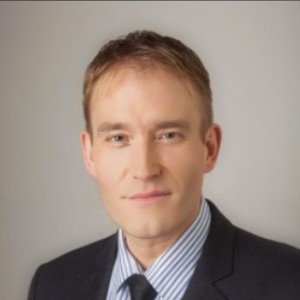Customs expert Arne Mielken advises importers to compile, and regularly consult, an import compliance manual.
An ‘import manual’ will help you stay clear of legal trouble. So what is it? It is a compliance manual which outlines how a company satisfies it regulatory duties. It explains what a company needs to do to meet its obligations.
It covers all import documentation for the UK. This includes certifications, licenses and other supporting documents. It also covers the topic of how to obtain supplier or provider documentation.
The manual specifies the roles and responsibilities of all personnel, and will create a clear understanding of what is required by company officials, regardless of who’s in charge. Importers must follow certain standards to safeguard consumers, while also maintaining fair competition – otherwise they face the prospect of being fined.
How will a compliance manual help my business?
An import compliance manual prevents ignorance from causing violations. If you’re accused of a violation; knowing the exact rules and regulations may help your case, and especially if the error was caused unintentionally.
A manual will help your company to avoid legal issues, but will also help it to perform at its best, while boosting employee productivity. It will provide staff members with a clear and concise understanding of their responsibilities – which is vital when handling sensitive information, such as client data and employee files.
What’s its purpose?
Compliance manuals will hopefully guarantee that employees follow identical practices. When importing goods, companies need to follow a series of steps. The import compliance manual ensures that these steps are followed correctly and logically.
If your workers don’t know what the HMRC expects of them, you will have to explain to customers why they’re being fined? Or why their shipment is being delayed or refused? By using a manual, errors and misunderstandings will be less frequent. A manual allows staff to understand their obligations, and what consequences they face when regulations are broken.
The process of importing items will become more time-consuming if you’re inexperienced with customs law. With a compliance manual, you’ll understand how to manage each step, from order processing through to delivery and beyond. In short, it explains a company’s overall obligations and those of their staff.
Do best practices exist?
They do and there are import templates to guide you. With a little editing, you may be able to construct your own import compliance manual, without the need to spend hours researching, writing, editing and updating this material. With our help, you can build and execute a compliance guide. I am happy to send you a template to start things off.
The top 10 elements of an import compliance manual:
1 – Customs classification compliance;
2 – Valuation compliance;
3 – Authorisations, licenses, permits;
4 – Origin and mark;
5 – Valuation of products;
6 – How to use duty-saving programs and pay the correct duty;
7 – Self-auditing;
8 – Countervailing duty and anti-dumping;
9 – Commercial invoice rules;
10 – Reporting and recording errors.
The introduction and conclusion can be adjusted to meet your company’s needs, but the chapters should explain the company’s overarching obligations for each category. It will also highlight which personnel are responsible for every stage of the process.
What happens if customs and global trade rules change?
Trade agreements and tariffs change on a regular basis, which means understanding international trade rules can become complex. However, it is vital for all companies, which import goods, to keep on top of all rule-changes. International trade is an ever-changing game, with new agreements and taxes implemented each year.
In addition to the changing economic policies of nations; the regulatory organisations that exist to govern importing and exporting also evolve, thus adding to the complexity and confusion. Guidelines can change at any time. And a failure to remain up-to-date with each and every modification – no matter how minor – can cost your business both money and reputation. Therefore, businesses must update their compliance manuals to reflect these new laws, regulations and organisational changes.
Customs officials may not always require companies to create an importers’ compliance manual, but all guidelines should keep this in mind. Your own customised manual should illustrate that you are aware of all the relevant local import rules before, during and after the import procedure. These can be identified by us.
Many organisations like to demonstrate to potential clients that they have developed a compliance guide that is both definitive and contemporary. A company’s management system is often used to showcase their professionalism, quality control and high standards.
Conclusion
Import compliance manuals could be the difference between success and failure in today’s global economy. It is therefore important to comply with all relevant standards, regardless of country or region. A compliance guide maintains consistency throughout your company, when dealing with complex international trade laws.
Failure to comply may damage reputation and cost money. And if management knowingly breaks the law, or fails to penalise a rule-breaking member of staff, they may be heavily punished. Therefore, if you’re an importer, acquire one as soon as possible.
Share via:








































